Sure, the headline above may strike some as a bold claim, but Production Designer Florencia Martin has indeed been exploring all sorts of periods in Los Angeles history, first by designing Paul Thomas Anderson’s Licorice Pizza, and then Andrew Dominik’s Blonde.
So when Damien Chazelle brought her on to design his new film, Babylon, he already knew Martin was a wise choice given how much experience she had in researching how Los Angeles has changed since the turn of the 20th century.
Babylon is an amazing film in that regard, showcasing a wide range of different locations and backdrops, from the long, winding roads of the desert to the gates of the Paramount studio lot, and everything in between. Whether it’s the hilltop mansion where a debaucherous, drug-fueled party is happening or the underground bunker retrofitted for an even crazier party, Martin certainly had her work cut out for her on Chazelle’s film.
That hard work certainly paid off, not just because Martin and her collaborator Anthony Carlino were honored with an Oscar nomination in a very competitive category, but because they have already won awards from BAFTA and their ADG peers.
Below the Line recently spoke to Florencia Martin over the phone for the following interview, where she laid out the details of what went into creating and dressing the period locations for Babylon, which is also up for Best Original Score (Justin Hurwitz) and Best Costume Design (Mary Zophres).
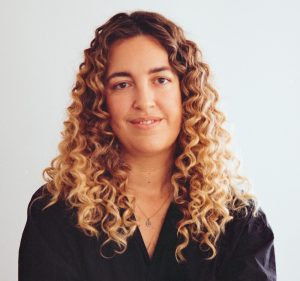
Below the Line: Congratulations on your Oscar nomination. I really love this movie, and I’m glad your work was acknowledged by the Academy, but if I were voting, I would have nominated it in a lot more categories.
Martin: Thank you. Definitely. As you know, it’s all a team effort, so missing the team and Damien and Linus [Sandgren, the DP], I’m very proud to represent the film.
BTL: It’s a one-of-a-kind film, one that I don’t see being matched any time soon. Had you worked with Damien before on any of his movies?
Martin: No, this is our first collaboration. We did a commercial together after the film, but no, this [was] our first time working together.
BTL: How were you two connected? Did you just hear he was looking for a production designer and you pitched him?
Martin: He was looking for a production designer, and I got sent the script by Paramount. After I read it, honestly, I just couldn’t wait to dive into the film. I put together visual references, and we met over Zoom, and really connected over the world that he wanted to create. It was really visceral [and] immersive, and he wanted to tell a really accurate portrayal of the period and really immerse the audience in the story. I just thought that was amazing. We looked at images together: People in the circus, poverty in Los Angeles, construction on sets. It was this big, bold, visual world that he wanted to create, and I was very honored to jump on to help him execute that vision.
BTL: I was really curious about the timeframe for this compared to Licorice Pizza and Blonde, which you designed as well, as they show different time periods in Hollywood. Had either of those come out when you started on Babylon?
Martin: No, neither of those films had come out. I had just wrapped on Licorice Pizza, and we had shot Blonde before, but Blonde came out last year, so they hadn’t come out yet.
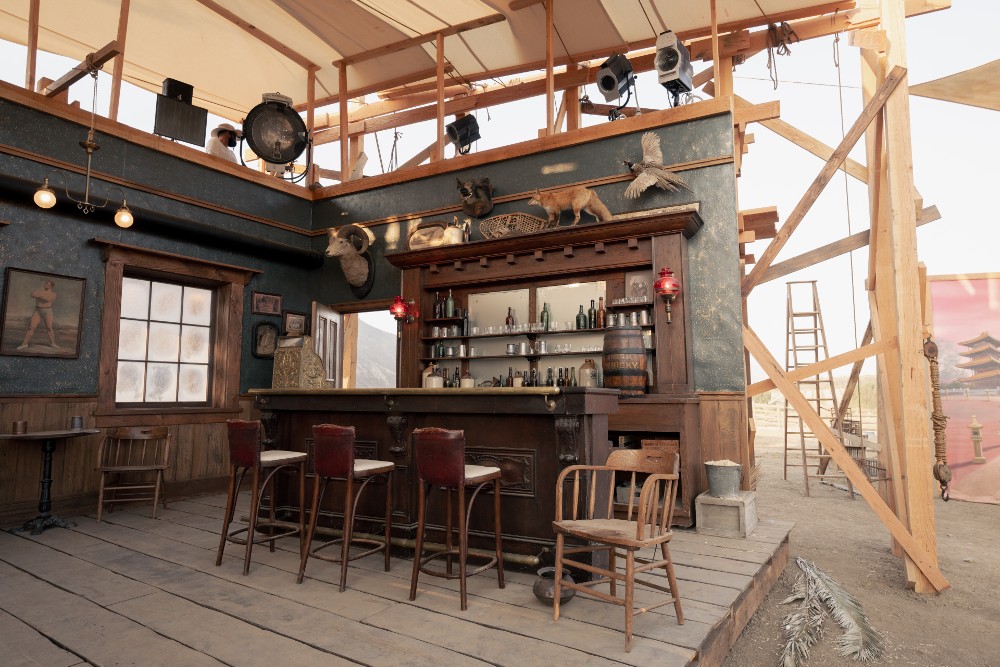
BTL: But you must have had a little bit of insight on how to handle this one from working on those movies, I assume?
Martin: Absolutely, yeah. I had a great start working on Mad Men with [Production Designer] Dan Bishop. We were doing New York and Los Angeles in the ’50s, so I’d worked on a number of period films here in the city, and I’m from Los Angeles. Of course, [there were] many different challenges, as you were saying, through the 1920s in Los Angeles, being that the city was just being constructed. That was a really great collaboration with Damien, because he really wanted to also tell the character of Los Angeles and the formation of the city, because this story is all about these dreamers coming to Los Angeles, building their own careers, or the film industry or the city.
You look at these photos of the 1920s, and Los Angeles was still in its barren desert state. It was all orange groves and Beverly Hills and Bel-Air, where the story starts, those roads were just getting laid in. You would look at these photos of little Ford Model T’s driving [in] what looked like the middle of the desert, and that was Sunset Boulevard, 1926. That was a really fun and great way, I think, to start the story, to kick us off. The challenge with the whole team of scavenging Los Angeles — because we did shoot everything in Los Angeles and practically in-camera — of finding locations that allowed us to have expansive exteriors in those rural settings, and also very opulent and intricate interiors. It was definitely a challenge to find those locations, and then do all the builds or modifications needed to take it back to the 1920s.
BTL: Were there a lot of readily available photos for reference? How did you go about finding them? I’m not sure while they were building if there was just someone there randomly taking pictures.
Martin: They did. They actually did. You know who is a great source? The Department of Water and Power. I’ve used their archives for a long time. They really were documenting the city being built and downtown Los Angeles and all the different areas, so you get photos of early Hollywood, early Beverly Hills, early San Fernando Valley. I’ve used that for all the films: Blonde, Licorice Pizza, and Babylon. And then, the studios have incredible archives, so Paramount Archival had thousands of images of the crews and the behind-the-scenes of how they were shooting, how they were building. My team really dove into those details and constructed the sets, especially for the silent film studios, where you see the front and the back of the sets as the cameras are weaving through to be built like they were being framed and built and rigged then. Research was a very heavy part of our process, but also History for Hire, the prop house, has an incredible inventory of film equipment from the era. We worked with them and their library to really get into the details of the hand-cranked cameras and the microphones for the later sound period and all the detail of the technology of both of those times in filming. There was a lot of research that went into it.
BTL: When you talk about the waterworks, I think of Chinatown, and how that played such a huge part in that movie. Obviously, Hollywood was dealing with that stuff while it was being built.
Martin: 100 percent. I love that film, and we were shooting in areas where they were, up in Piru, Fillmore, Santa Paula, because that stretch of land is still farmland and historically accurate to what Los Angeles would have been like in that time. We constructed our silent film studio in Rancho Piru, where you could actually see the dam behind Nellie (Margot Robbie) if you squint [laughs], but it was about being surrounded by hills like the Hollywood Hills, [which] you see in all the early photographs of Universal, Paramount and Warner Brothers being built. It was pretty special to be there and [to] be able to manufacture this studio.
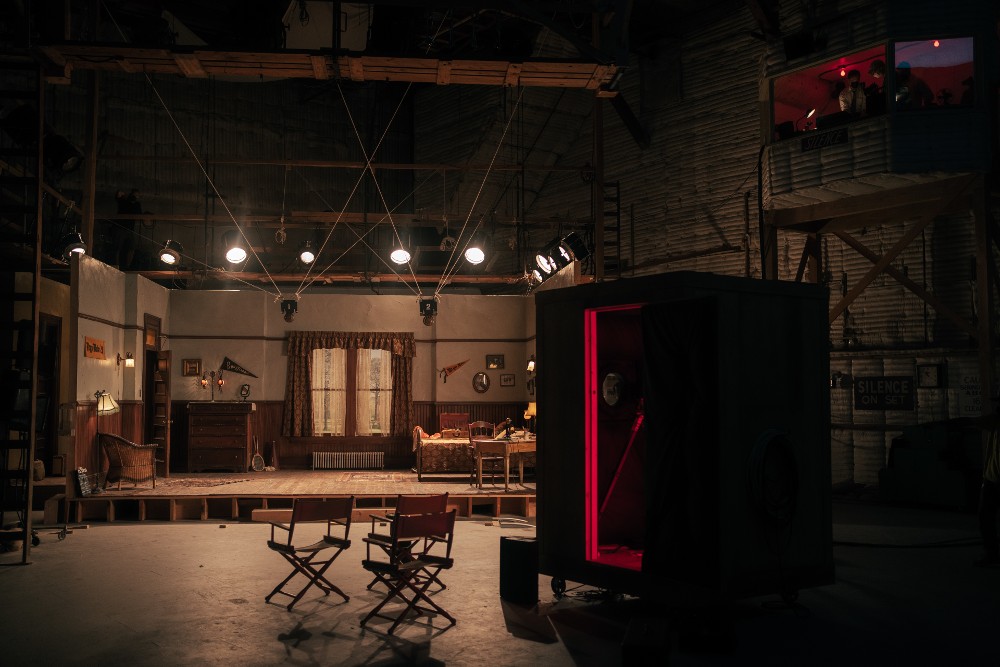
BTL: I do want to ask you about some of those specific locations, and I guess we can start with the soundstage for that scene. I assume that was built on an actual soundstage, but were you able to use any of what was there already and then dress up the rest?
Martin: What an honor to be a Paramount film prepping in Paramount at the Clara Bow building, and then shooting the sound stages that were built in the 1920s at Paramount. We did have to do an immense amount of retrofitting to bring it back to [the] 1920s. We’re obsessed with safety signs in the modern day, so it was a lot of taking away, taking away, taking it away. All the staircases were painted bright yellow, so we needed to repad — we ended up building walls to hide modern electrical equipment and safety equipment and building the soundstage out to be like the 1920s. And then, there’s this wonderful element and all the sets throughout Babylon where you see the behind-the-scenes. You have the green beds and the catwalks, all the entrances and exits to the set piece itself.
Then you have the film crew, so with [Set Decorator] Anthony Carlino and [Prop Master] Gay Perello, bringing in the props and the set dressing to really look at what the new technology was for sound. We had a lot of fun with that. The fact that this was all new to them, and they were just figuring it out, so we constructed our camera boxes to be pretty rudimentary, but they were just piecing it together, which matched our research. The first sound engineers, they put them up high. We call that the eye in the sky. So there were these sound booths and these big stairs that went all the way up into the perms, so the sound guy could look over the whole set. Damien had scripted it that way, and it’s so dynamic, because visually, it really showed you the guy who’s in [a] tower now, and comically, he has to run down the stairs every time to deal with the sound defects.
And then the set itself, which was scripted as the East Coast dorm room for Nellie arriving [at] college for the first day. Babylon is really an amazing film to have designed because there were so many stories behind the story of each set. You have Wallach’s mansion [where] he’s throwing a party, so first, we had to design the mansion, and then, what the party looked like and the early film studio sets. We had the land, and then the construct of the sets and the set pieces themselves, and that was all timed to music in a single shot. Working really closely with all our heads of department, Linus Sandgren in camera, to navigate the timing. We had a lot of practical effects. [Special Effects Coordinator] Elia Popov rigged the whole kitchen set to burst into flames and real pyrotechnics for the battlefield. It was a huge endeavor, real animals, picture cars. We had really cool custom picture cars with the elephant truck, and the camera truck in the battle scene. We really just wanted it to be as immersive as possible, so we were building these sets to be able to navigate 360s. Like in the soundstage, as you asked, everything was covered, basically.
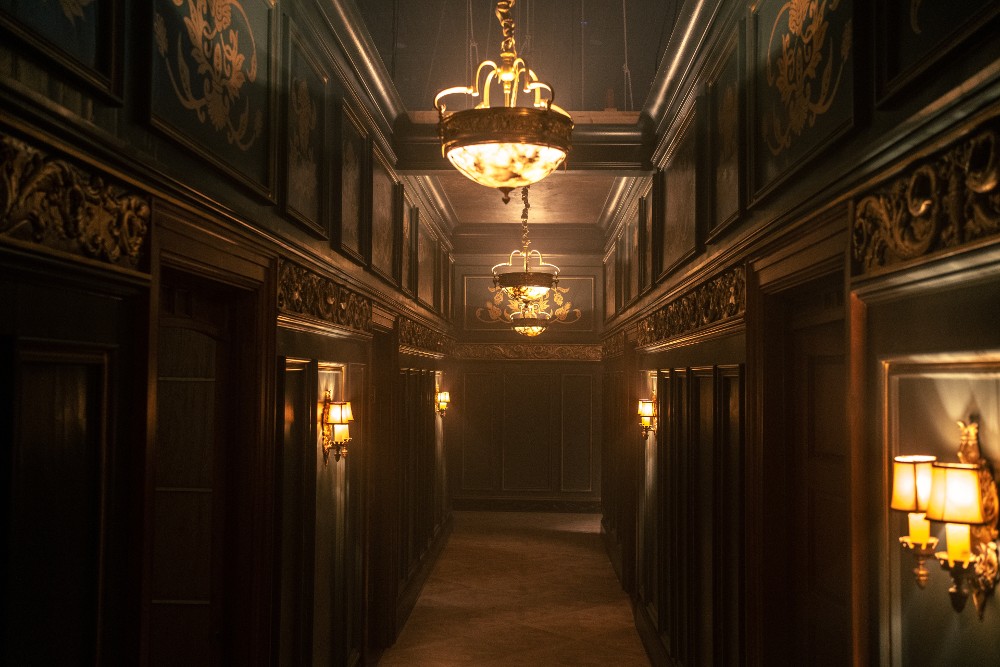
BTL: You mentioned the mansion earlier, and I assumed the exteriors and the interiors were different places. Did you actually build some sort of mansion front or was it an existing building?
Martin: We did both. We wanted to not have a green-screen shot for that. It’s the opening of the movie, and we wanted to be able to really be present in the setting. Damien had a really specific vision that Wallach’s mansion would be at the top of the barren hills. You look at these photographs of these mansions being constructed, and they’re literally surrounded by dirt and a winding road. It’s very cinematic, it’s just not the luscious Hollywood Hills that you think of today. We went out to the desert out by Lancaster. We were lucky to find this castle that was built in 1926 that’s sitting there. We wanted to tie it into the ballroom, so in front of their existing garage, we built a 27-foot tall front that we then later extended in post for a really quick wide establishing shot to tie it into the rest of the mansion. It was great because we were able to have the entrance to the ballroom and the geography of the length and the width of the room matched the location [where] we shot the interior location, which we shot at the ACE Theater in Downtown LA.
BTL: The other location I wanted to ask about is the underground bunker, which is obviously a very unique thing, and I’m wondering if that was completely built or a location, but I’d love to know how you worked with Anthony on decorating those sets since there’s obviously a lot going on there.
Martin: In the underground? Oh my gosh. Well, Anthony Carlino is an incredible partner and teammate. We had a lot of sets on this film, and I wanted it to feel like each character or section of the story had its own individual look. Like Los Angeles, it’s all a kaleidoscope of architecture and characters, and so it was important to be really distinctive to Jack [Conrad, Brad Pitt‘s movie star] and his Spanish revival house. And then Elinor [Jean Smart‘s tabloid reporter character], who’s part of the old guard, and she’s in her Victorian office. With the underground, we ended up building that entire sequence, because we had so many different set changes, as they’re descending to the final floor, if you will. Damien wanted it to feel medieval, like they were really going underground and suddenly, crossing the alligator into a fire tunnel, and then revealing, like, the final monster at the end with the man eating the rats.
There was such specific blocking and geography, and we actually had to change our location from a freestanding building to the tunnel that we found bored into the earth, due to some logistic complications. When that happened, it actually opened a new concept, which was all the sewers, and tunnels that were being extended from Los Angeles into the San Fernando Valley in this era. That’s the research that we took from to build and make sense of this underground space that this party group had taken over. We were able to build that on stage 16, and Mike Diersing, our construction coordinator, in order to pull off such a huge expansive build, he actually had found sitcom TV set flat walls that we repurposed because we were cement-plastering all of them.
That was pretty ingenious because, we were pretty tight-strapped, because that was towards the end of our production, this big shift. It was a lot of cement and a lot of poured plaster, and we redressed the first room that you come in. That was a fighting sequence. We redressed and changed the access points of that room four times to create the four floors and worked with Anthony to source different types of medieval torture weapons, circus props, to give that layering and texture for each floor, so it was very distinctive in the staircase that goes down. I worked with Linus closely [on] how we were going to change the lighting, too. At first, it’s just a spotlight on the stage and then the lights are flickering, then [they] turn into a red light, and then, in the final floor, it’s all flames. It was really, really, really fun and dynamic to create that sequence.
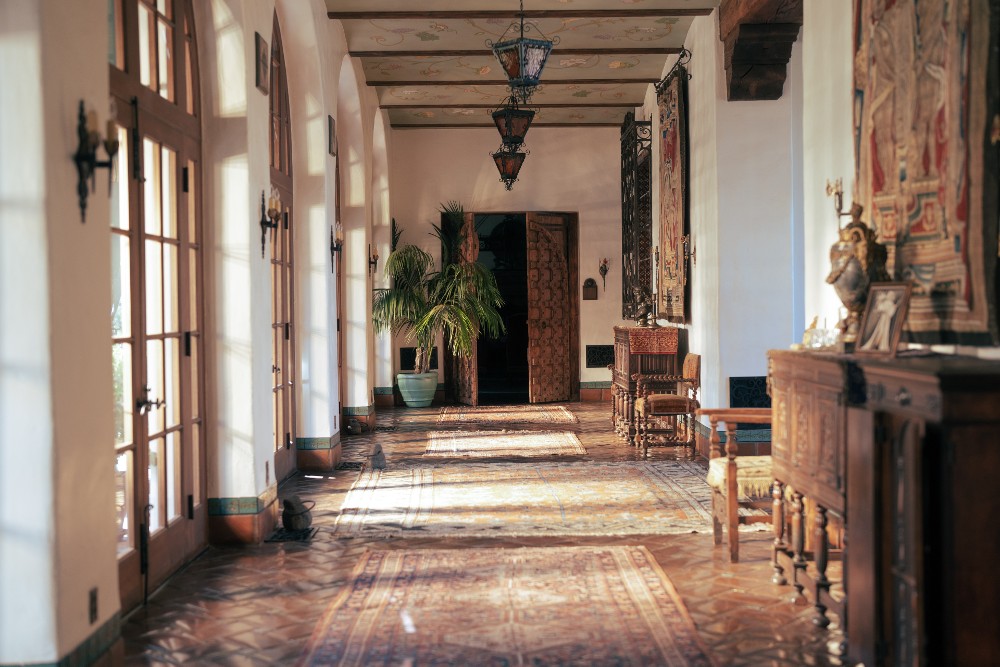
BTL: There are obviously many longer scenes at specific locations, but there are a ton of locations overall. Things like the street towards the end where Manny goes to see the Count, did you just find a street that worked and dress it up and build things?
Martin: That’s such a great question. We spent a lot of time looking for streets that would show the evolution of the buildings in Los Angeles. The first time you see streets is when Manny is going to get the camera from the battlefield. We found that in Pomona, because it was single-story buildings with light poles that went into deep perspective, and it was great. It was a really nice transition from the battlefield through these orchards that we shot in Riverside, and then ended in Pomona.
I bring that up, because then the next time you see the city, it’s when we go to the Count’s [place]. There’s an intersection in downtown Los Angeles, where all those apartment buildings were built in the mid-1920s. It just was a really nice way that Damien and I discussed to finish out the 1920s section, that if you’ve seen the city as a desert, you’d seen low single-story buildings, and then now you’re seeing taller apartment buildings as the city is developing, growing. There’s a lot of work that goes into shooting on location in L.A. on the streets. We talked about the soundstage, and the streets are also filled with so much parking signage and yellow curves, and non-period streetlights. There’s a big period overlay that gets built onto the location to transform it back to the ’20s, but we did shoot that practically on locations.
[At this point, we just began chatting about the differences between New York and L.A. and how they have changed over the decades.]
Our history is so young here. Everything really started, and just the last thing about the film, it’s amazing, because [with] the design, we really focused in on matching the story that Damien was telling. Chinatown, everything that you see of Lady Fay’s [Li Jun Li‘s character], all of that got torn down to build Union Station in L.A. Even though we’re a young city, Los Angeles isn’t scared of bulldozing something to build something new, so our history is getting less and less and harder to find. So it’s really nice to have it on screen, especially also with Licorice Pizza, because the San Fernando Valley is very quickly changing and modernizing. You take for granted what’s going to be available for you the next time you go out to shoot.
BTL: I spoke to Rick Carter, who’s also nominated for The Fabelmans, and he told me they were shooting their Paramount lot scene at the same time that Damien was shooting Manny outside the studio gates. How did you pull that off, with two productions shooting there on the same day?
Martin: Yes! Rick reached out to me and introduced himself and was very kind. [He] said, ‘Hey, we’re going to be at Paramount.’ They were there very early in the morning, so his Art Director Lauren Polizzi, and our Art Director Ace Eure, walked through the alley that you see in the final scene of The Fabelmans, [which] was part of our soundstage. Really, it was totally fine. They were doing a pretty simple single shot there, and we made sure that schedule-wise that they could pull that off. We came in later in the day and shot our 1920s sequence with all our picture cars and props and dressed that back in. That’s pretty special, to have two films that are behind the scenes of Hollywood, shooting at Paramount together. It’s been really wonderful to have someone I look up to so much, like Rick Carter, [and] be nominated with him this season. So, it’s a really special time.
Babylon is still playing in select theaters, though it’s also currently streaming on Paramount+ and available to buy or rent on all major VOD/digital platforms, as well as on Blu-ray and DVD.





